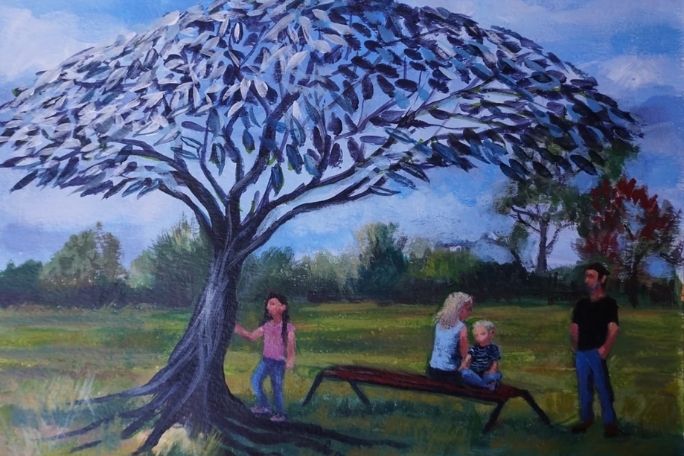Lesson Summary
In this lesson, students discover how people have built resilience during the recovery phase of a natural hazard through art and develop a community arts project or program that fosters community connectedness.
Learning intentions:
Students will...
- discover how people can rely on art as a form of expression and therapy
- discover how people and artists have built resilience after a natural hazard.
Success criteria:
Students can...
- create an artwork that depicts the emotional benefits of making art and share the emotional benefits with their peers.
Lesson guides and printables
Lesson details
Curriculum Mapping
Australian Curriculum content descriptions:
Year 7 & 8 Art:
- Investigate ways that visual conventions, visual arts processes and materials are manipulated to represent ideas, perspectives and/or meaning in artworks created across cultures, times, places and/or other contexts AC9AVA8E01.
- Reflect on the ways that they and other artists respond to influences to inform choices they make in their own visual arts practice AC9AVA8D02.
- Select and manipulate visual conventions, visual arts processes and/or materials to create artworks that represent ideas, perspectives and/or meaning AC9AVA8C02.
Syllabus outcomes: VAS4.3, VAS4.5.
General capabilities: Critical and Creative Thinking, Personal and Social Capability.
Cross-curriculum priority: Sustainability.
Relevant parts of Year 7 & 8 achievement standards:
By the end of Year 8, students identify and analyse how other artists use visual conventions and viewpoints to communicate ideas and apply this knowledge in their art making. They explain how an artwork is displayed to enhance its meaning. They evaluate how they and others are influenced by artworks from different cultures, times and places.
Students plan their art-making in response to the exploration of techniques and processes used in their own and others’ artworks.
Level of teacher scaffolding: This lesson involves a medium level of teacher scaffolding with teachers facilitating class discussion, encouraging students’ to discuss emotions and artmaking processes and benefits.
Resources Required
- A device capable of presenting a presentation to the class
- A device capable of typing or an art exercise book (art folio)
- Art materials (paper, pen, pencil) to create their art program or project proposal
Skills
This lesson is designed to build students’ competencies in the following skills:
- Communication
- Creativity
- Critical Thinking
- Cultural Understanding
- Community Engagement
- Ethical Understanding
- Problem Solving
- Global Citizenship
Additional Info
We encourage you to undertake the free PD Course How to teach a unit on fire and flood resilience for tips on how to best deliver this lesson.
If you’re concerned about the challenging nature of these topics, consider the free PD Course How to approach trauma in the classroom for information on how best to support your students.
This lesson was made in partnership with
Minderoo Foundation (www.minderoo.org)


Welcome back!
Don't have an account yet?
Log in with:
By signing up to Cool.org you consent and agree to Cool's privacy policy to
store, manage and process your personal information. To read more, please see
our privacy policy here(Opens in new tab).
Create your free Cool.org account.
Many of our resources are free, with an option to upgrade to Cool+ for premium content.
Already have an account?
Sign up with:
By signing up to Cool.org you consent and agree to Cool's privacy policy to
store, manage and process your personal information. To read more, please see
our privacy policy here(Opens in new tab).